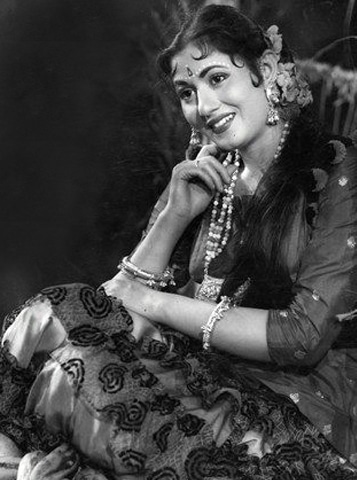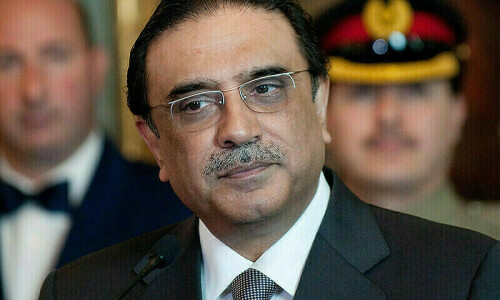
February 23 this year will mark the 50th death anniversary of a truly iconic star of the Urdu/Hindi cinema. Venus of the Indian screen, as she was called, Madhubala died merely nine days after her 36th birthday. Her innumerable admirers were spared of watching the ravages of time affect her beauty. In this she was like Marilyn Monroe, but that is where the similarity ends. Monroe was a sex-symbol, a seductress. Madhubala’s attractiveness was predicated on innocence. But she was also a great performer and had a wide range of expressions at her command. She played a teasing comedienne in movies such as Chalti Ka Naam Gaarri (1958) as convincingly as she did when she appeared as a tragedy-struck courtesan in K. Asif’s magnum opus Mughal-e-Azam (1960).
The star, who sought love all through her life, was ironically enough born on St. Valentine’s Day in Delhi in 1933 in a large lower-middle class family. Named Mumtaz Jahan Begum, she took part in children’s radio programmes when she sang for no less a composer than Khurshid Anwar.
Her histrionic talents were discovered by Rai Bahadur Chunnilal, the General Manager of Bombay Talkies, who was instrumental in bringing her, along with her father, to Devika Rani, the owner of the studios. While only eight, Baby Mumtaz, as she was called, was signed to play the daughter of Mumtaz Shanti and Ulhas, which she did with her innate confidence. She was instrumental in bringing her estranged parents together in the film. The movie, Basant (1942), ran for 76 weeks and proved to be a huge success commercially. The barely nine-year-old was asked to record two songs in her voice, one of which — “Mere chhotay se mun mein, chhoti si dunya re” — was quite a hit.
Her co-stars remember her as statuesque even to this day. Be it her impish look or radiant smile, everything came naturally to the Bombay star. And, although she died young, the star of 72 films has been immortalised in cinematic history
Madhubala’s second movie was Mumtaz Mahal (1944), directed by the stalwart Kedar Sharma. She was assigned the role of the daughter of Jahan Ara, the daughter of Mughal emperor Shahjehan. Its success motivated Madhubala’s father, Ataullah Khan, to move to what is now Mumbai.
Four films later, Sharma gave Mumtaz Jahan Begum her first role as a heroine in Neel Kamal (1947). This was also when she acquired the name Madhubala. Sharing the marquee with her was another newcomer, Raj Kapoor, who had until then assisted Kedar Sharma.
Madhubala appeared in 12 more films, none of which was a mega success until she appeared in Bombay Talkies’ Mahal (1949). A fantasy, the film established her as a top-ranking star, just as it reconfirmed Ashok Kumar as one of the major actors, and Kamal Amrohvi and Khemchand Prakash as a talented director and composer, respectively. As the name Mahal crops up, one cannot help drifting down melody lane. The mellifluous number ‘Aayega, aayega aanay wala’, penned by Nakhshab, also established Lata Mangeshkar as numero uno in the field of playback singing. After that there was no looking back for the two ladies.
Madhubala then shared stellar honours with two top stars, with Dilip Kumar in Tarana (1951) and a few comedies with Dev Anand. At the level of realism, Tarana left much to be desired but, in the field of romance, there have been few parallels, mainly perhaps because the two lead players seemed to have fallen in love during the course of the film’s shooting.
A year later came Sangdil, which was an adaptation of Emile Bronte’s classic novel Wuthering Heights. Madhubala and Dilip Kumar had by then formed a team whose popularity equalled, if not excelled, the fame of the Nargis-Raj Kapoor pairing.
Mehboob Khan’s Amar (1954) was the third movie to feature them. The thought-provoking flick also featured Nimmi, who falls prey to Dilip Kumar’s moment of weakness. He regrets it, but all in vain. When Madhubala comes to know of her beloved’s misdeed, she convinces him to leave her and take Nimmi to the altar. Mehboob’s directorial skills, Naushad’s haunting musical score and the fine performances of actors were, however, unable to save Amar at the box-office. The theme was too mature for the ’50s, a time when the hero was uniformly portrayed as an unstained character.
In the meanwhile, K. Asif got Madhubala to play Anarkali with Prithviraj as Emperor Akbar and Dilip Kumar as his rebellious son. One would need a separate piece to write about the performances of people who contributed their might to make Mughal-e-Azam an all-time classic.
The love scenes were intensely performed, even though the lead players were not on talking terms with each other because of the differences that had arisen between them over the shooting of Naya Daur (1958). But love had not totally evaporated from their hearts.
Spontaneity, which was the hallmark of Madhubala’s personality, was on full display in her assignments. Be it her impish look or her radiant smile, everything came to her naturally. Chalti Ka Naam Gaarri and Half Ticket (1962) were two comedies she did with Kishore Kumar, with whom, by the way, she got married out of sheer desperation. He lacked depth and seriousness. The marriage didn’t last.
Madhubala appeared in 12 more films, none of which was a mega success until she appeared in Bombay Talkies’ Mahal (1949). A fantasy, the film established her as a top-ranking star, just as it reconfirmed Ashok Kumar as one of the major actors, and Kamal Amrohvi and Khemchand Prakash as talented director and composer, respectively.
Her list of comedies is pretty long. Not to be forgotten is Mr & Mrs 55 (1955) where she had her co-star, Guru Dutt — also the producer and director of the film — try and match her skills as a comedienne.
Among her memorable movies was a musical which captured her beauty as the leading man, Bharat Bhooshan, crooned the title song “Zindagi bhar nahi bhoolegi woh barsaat ki raat, eik anjaan haseena se mulaqat ki raat”. No prizes for guessing, the movie was titled Barsaat Ki Raat (1960).
Madhubala appeared in 72 films (six of which were as a child star) and one was released three years after her death — Jwala with Sunil Dutt as her co-star. She was not very selective and more than once she agreed to face the camera to help filmmakers in distress.
She won no awards and didn’t need to. But for her powerful performance in Mughal-e-Azam she bagged the highest number of votes from the readers of Filmfare in the category of what was at that time called the ‘Best Actress Award’. But it came as a shock when the announcement was made. The coveted prize was given to Bina Rai for a mediocre performance in a forgettable movie — Ghunghat (1960). Incidentally, Rai was a close friend of J.C. Jain, the CEO of the Times of India Group and Filmfare was one of its publications.
Madhubala’s biggest problem in life was septial disorder, commonly called a ‘hole in the heart’. It was diagnosed as early as the beginning of 1950s. She often used to spit blood but carried on uninterruptedly. The disease became more intense in the late ’50s, but she worked without any break. On the sets of Mughal-e-Azam, she continued to perform with heavy iron chains tied around her arms and legs in some scenes, not to speak of the physical predicaments she had to bear during long-drawn rehearsals.
“Worst of all was the wearing of colossal iron chains, row upon row, which were displayed for the camera when she had to raise her hands,” wrote her biographer Khatija Akbar in a well-researched book ‘I Want to Live: The Story of Madhubala.’ “Abrasions from the weight of the chains were so bad, she was confined to bed for many days.” K. Asif’s wife Sitara Devi asserts “The chains, the continuous night shootings killed her.” In the ’60s Madhubala reduced her work load.
One is tempted to quote from her obituary, penned by the noted film journalist, Gulshan Ewing: “She always had trouble with her heart, both physically and emotionally, but it was a valiant heart, large and kind and as capable of giving.”
All through her career, she gave generously, monetarily and verbally. Stories, quoted by Khatija Akbar, are too many to be reproduced in a newspaper article.
When I interviewed Dev Anand in Mumbai in 1992, I asked him what did he think of his co-star. He answered in one word “Statuesque”.
“You are ignoring the fact that she was a fine performer, as well,” I’d retorted.
Dev Anand thought for a few seconds and answered “You are right. But I am not the only one to make that mistake.”
Her biographer quoted one of Madhubala’s sisters, who said Dilip Kumar, by then married to Saira Bano, visited her to enquire about her health. In their last meeting, when she sought his advice on some matter, she asked him if he would do another movie with her when she would be “alright”. He assured her “You are perfectly alright” and promised her he would.
He heard of her death when he was doing Gopi (1970) in Madras. On landing at the Santa Cruz airport, he drove straight to the cemetery where she was buried. He offered fateha and stood quietly next to her grave for some time.
Published in Dawn, ICON, February 10th, 2019












































